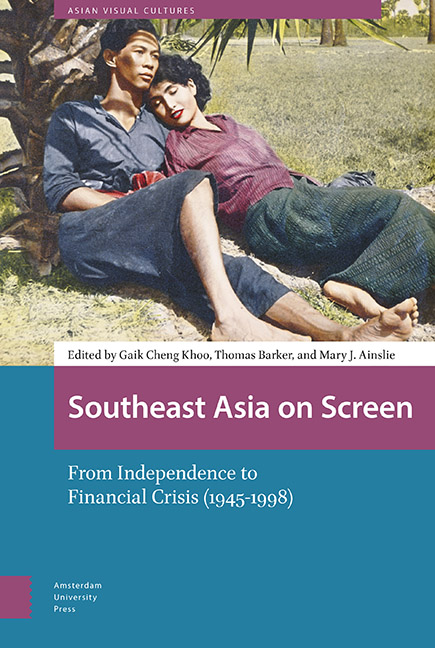Book contents
- Frontmatter
- Contents
- List of Illustrations
- Introduction: Southeast Asia on Screen: From Independence to Financial Crisis (1945–1998)
- Section 1 Independence and Post-World War II Filmmaking: Nation-building, Modernity and Golden Eras
- Section 2 Key Directors
- Section 3 Popular Pleasures
- About the Authors
- Index
Introduction: Independence and Post-World War II Filmmaking Nation-building, Modernity and Golden Eras
Published online by Cambridge University Press: 20 November 2020
- Frontmatter
- Contents
- List of Illustrations
- Introduction: Southeast Asia on Screen: From Independence to Financial Crisis (1945–1998)
- Section 1 Independence and Post-World War II Filmmaking: Nation-building, Modernity and Golden Eras
- Section 2 Key Directors
- Section 3 Popular Pleasures
- About the Authors
- Index
Summary
We begin this volume with five essays addressing the immediate post-World War II context of cinema in Indonesia, Philippines, Vietnam and Burma. As a chronological starting point, this period represents a critical historical juncture in Southeast Asian history, marked by the formal end to European colonial rule and the beginning of significant US interest and presence in the region. Anti-communism became a central element of American policy and a renewed sense of nationalism informed independence movements and later governments.
Section 1 therefore outlines the immediate context of nation-building in the post-war era of Southeast Asian independence, characterized by a general upsurge in indigenous production across the region as well as the emergence of major key studios and filmic figures. Local regimes, rulers and governments recognized the significance of film as a source of propaganda and state interest in filmmaking correspondingly increased.
In our first chapter, Yngvesson and Alarilla take the immediate post-war context of 1950s Indonesian filmmaking, addressing both the nationalistic nature of such films as part of a postcolonial context while also highlighting the confluence of local cultural specificity within this filmmaking style. Addressing the Philippines in Chapter 2, Arriola then also highlights the development and growth of the major Philippine studios in this post-war era, a successful oligopoly which effectively streamlined production and solidified the key genres and themes that still characterize Philippine cinema today. Examining the ways in which filmmaking practices drew upon older media forms, specifically the medium of komiks, Arriola points to this highly successful and culturally specific practice as a means through which the big studios of post-war Philippine cinema were able to consolidate their market dominance. In Chapter 3, Ferguson then charts the development of Burmese filmmaking at this important juncture, including the growth in film production in the late 1940s and into the 1950s, demonstrating how the newly independent Burmese government and its military both reorganized the cinema industry and solidified particular thematic trends as a means to harness the power of this medium.
- Type
- Chapter
- Information
- Southeast Asia on ScreenFrom Independence to Financial Crisis (1945–1998), pp. 35 - 36Publisher: Amsterdam University PressPrint publication year: 2020



